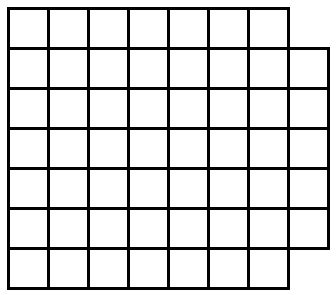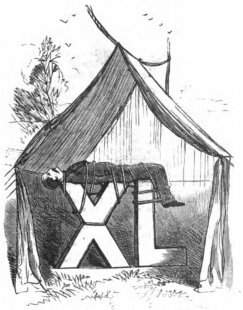
Two squares have been removed from this 8×7 rectangle. Can the remaining 54 squares be tiled orthogonally with 18 3×1 tiles?

Two squares have been removed from this 8×7 rectangle. Can the remaining 54 squares be tiled orthogonally with 18 3×1 tiles?
You have n cubical building blocks. You try to arrange them into the largest possible solid cube, but you find that don’t have quite enough blocks: One side of the large cube has exactly one row too few.
Prove that n is divisible by 6.
A problem from the 2003 Moscow Mathematical Olympiad:
A store has three floors, which are connected only by an elevator. At night the store is empty, and during the workday:
(1) Of the customers who enter the elevator on the second floor, half go to the first floor and half to the third floor.
(2) The number of customers who get out the elevator on the third floor is less than 1/3 the total number of customers who get out of the elevator.
Which is greater, the number of customers who go from the first floor to the second on a given workday, or the number who go from the first floor to the third?
Paul R. McClenon of Washington D.C. contributed this problem to the January-February 1964 issue of Recreational Mathematics Magazine:
The poor patient read the prescription which would save his life. ‘Mix carefully a one-pint drink, made of scotch whisky and water, mixed one to five (1/6 scotch, 5/6 water). Drink it quickly and go to bed.’
However, the patient finds only the following items at hand:
A one-quart bottle, about half full of scotch whisky.
An eight-ounce glass.
An unlimited supply of water from his faucet.
A sink with a drain.
No other containers or measuring devices.He can pour from either container to the other, without spilling a drop, and can fill either to the brim without loss. How should he mix the prescription? Will he figure it out in time? Will he be saved? Did a doctor or bartender write this prescription?
The magazine went out of business before it could publish the solution. I’ll leave it to you.
05/17/2013 UPDATE: There seem to be a number of ways to accomplish this. Here’s one:
We need a 16-ounce dose that’s 1/6 whiskey, so the final mixture must contain 2.666 ounces of whiskey.
That leaves us with 16 ounces in the jug, 1/6 of which is whiskey and the rest water, as directed.
Thanks to everyone who wrote in.

From The Youth’s Companion, Sept. 25, 1879:
Why is this man likely to succeed in life?
Why do we know he has reached middle life?
How does the picture indicate his occupation?
If you choose an answer to this question at random, what’s the chance that you’ll be correct?
(a) 25% (b) 50% (c) 0% (d) 25%